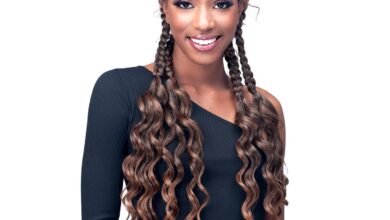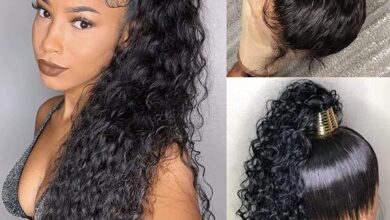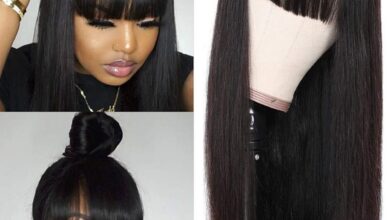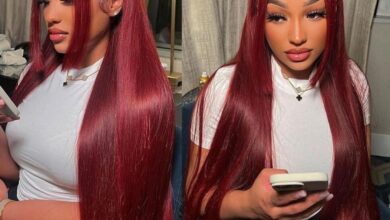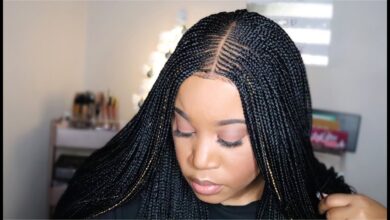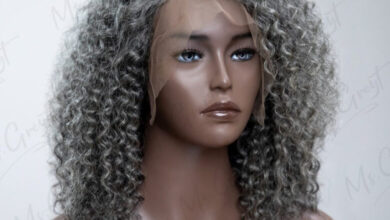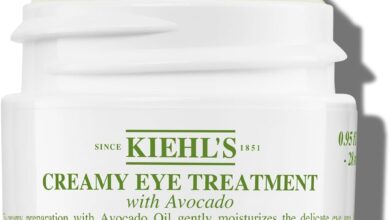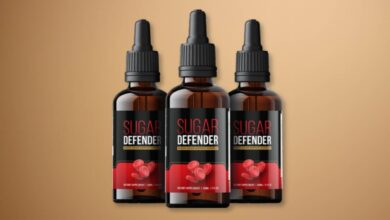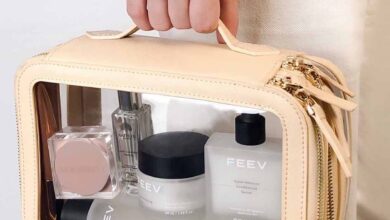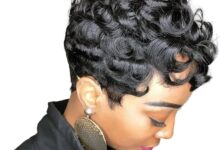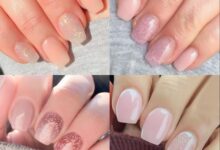Unlock Healthy Hair: The Ultimate Guide to Routine Shampoo & Conditioner

Unveiling the Mystery: Your Guide to a Flawless Hair Routine with Routine Shampoo & Conditioner
Have you ever stared at a bottle of shampoo and conditioner, bewildered by the endless options and conflicting advice? You’re not alone! Many of us grapple with the frustration of frizzy flyaways, dullness, or persistent scalp issues despite using these seemingly simple products. But what if the secret to healthy, manageable hair wasn’t a complex potion, but a deeper understanding of routine shampoo & conditioner?
This guide dives headfirst into the world of hair care, empowering you to unlock your hair’s full potential. We’ll break down the science behind routine shampoo & conditioner, revealing how they work together to cleanse, nourish, and protect your precious strands. We’ll also explore the fascinating world of hair types and porosity, helping you choose the perfect duo for your unique needs. So, ditch the confusion and get ready to transform your hair care routine from frustrating chore to a confidence-boosting ritual!
Roottina Daily Routine Shampoo and Conditioner, Fights Hair Loss
Daily Routine Essential Shampoo and Conditioner Combo - Paraben-Free, (Pack - 2)
Roottina 2 Daily Routine Shampoo and 1 Conditioner, Fights Hair Loss
Brand NEW - ROUTINE Hair Shampoo & Conditioner - You Pick Scent
Routine Wellness Shampoo and Conditioner Set for Stronger Hair - Biotin | Col...
Routine Wellness Shampoo and Conditioner Set for Stronger Hair Lilac & Gardenia
Fights Hair Loss, Daily Routine Shampoo and Conditioner for Women Hair Loss, Pr
Unveiling the Mystery: Your Guide to a Flawless Hair Routine with Routine Shampoo & Conditioner
Have you ever stared at a bottle of shampoo and conditioner, bewildered by the endless options and conflicting advice? You’re not alone! Many of us grapple with the frustration of frizzy flyaways, dullness, or persistent scalp issues despite using these seemingly simple products. But what if the secret to healthy, manageable hair wasn’t a complex potion, but a deeper understanding of routine shampoo & conditioner?
This guide dives headfirst into the world of hair care, empowering you to unlock your hair’s full potential. We’ll break down the science behind routine shampoo & conditioner, revealing how they work together to cleanse, nourish, and protect your precious strands. We’ll also explore the fascinating world of hair types and porosity, helping you choose the perfect duo for your unique needs. So, ditch the confusion and get ready to transform your hair care routine from frustrating chore to a confidence-boosting ritual!
Understanding Routine Shampoo & Conditioner: The Powerhouse Duo for Healthy Hair
Ever wondered what happens behind the scenes when you lather up with shampoo and follow it with a creamy conditioner? It’s more than just getting your hair clean! Let’s delve into the world of routine shampoo & conditioner and understand their individual roles in creating a healthy scalp and beautiful hair.
A. The Cleansing Power of Shampoo:
Shampoo acts as the frontline defense, removing dirt, oil, sweat, and product buildup from your scalp and hair. It typically contains surfactants, a type of cleansing agent that attracts dirt and oil molecules, allowing them to be rinsed away with water. But shampoos come in a variety of formulas, some harsher than others. Understanding your hair type and scalp condition is crucial for choosing the right one. For example, a gentle, sulfate-free shampoo might be ideal for someone with dry, color-treated hair, while someone with oily hair might benefit from a clarifying shampoo occasionally to remove excess product buildup.
B. The Nourishing Magic of Conditioner:
Conditioner follows shampoo, and its primary function is to replenish moisture and improve manageability. It contains ingredients like emollients and humectants, which coat the hair shaft, smoothing the cuticle and preventing frizz. Conditioners also often include detangling agents, making combing and styling a breeze. But the benefits go beyond just surface-level effects. Some conditioners can target specific concerns like split ends or dryness by adding essential nutrients and proteins to strengthen the hair structure.
Demystifying Your Hair: Understanding Hair Type & Needs
Not all hair is created equal! Just like fingerprints, your hair has a unique personality defined by its type and porosity. By understanding these factors, you can choose a routine shampoo & conditioner that caters to your specific needs.
A. The Hair Type Spectrum: Straight, Wavy, Curly, Coily
The most common hair type categories are straight, wavy, curly, and coily. Straight hair has a smooth, flat texture and tends to lay flat against the scalp. Wavy hair has a bend or “S” pattern that can range from loose to beachy waves. Curly hair forms distinct loops or coils, with varying degrees of tightness and definition. Coily hair, the tightest hair type, has a zigzag growth pattern and forms small, springy coils. Understanding your hair type is crucial, as each type has unique needs for moisture, cleansing, and styling. For example, straight hair might benefit from volumizing shampoos, while curly hair craves intense moisture to combat dryness and frizz.
B. Hair Porosity: Unveiling Your Hair’s Absorption Power
Hair porosity refers to the ability of your hair strands to absorb and retain moisture. There are three main categories: high porosity, medium porosity, and low porosity. High porosity hair absorbs moisture quickly but loses it just as fast, often leading to dryness and frizz. Medium porosity hair is the “Goldilocks” zone, absorbing and retaining moisture well. Low porosity hair has a tightly closed cuticle, making it resistant to moisture absorption and prone to product buildup. Knowing your hair porosity helps you choose the right products. For instance, high porosity hair needs products with humectants and emollients to lock in moisture, while low porosity hair benefits from lightweight conditioners that won’t weigh it down.
C. Scalp Condition: Finding Balance for a Healthy Foundation
A healthy scalp is the foundation for healthy hair. Common scalp conditions include dryness, oiliness, and itchiness. Dry scalp can lead to flaking, while oily scalp can cause greasiness and weigh down hair. Itchy scalp can be a sign of irritation or dandruff. Identifying your scalp condition is vital for choosing the right shampoo. For example, someone with a dry scalp might benefit from a gentle, moisturizing shampoo, while someone with an oily scalp might need a clarifying shampoo to remove excess sebum buildup. Remember, a balanced and healthy scalp promotes optimal hair growth and health.
Choosing Your Dream Team: Selecting the Right Routine Shampoo & Conditioner
Imagine your hair care routine as a superhero squad – the shampoo and conditioner are your dynamic duo, working together to combat dryness, frizz, and scalp woes. But with countless options on the shelves, how do you pick the perfect pair for your unique needs? Let’s break down the science behind shampoo & conditioner ingredients and empower you to make informed choices.
A. Decoding Shampoo & Conditioner Labels: A Crash Course in Ingredients
Understanding the ingredients listed on shampoo & conditioner bottles is key to selecting the right products. Here are some key players to watch for:
- Surfactants: These are the cleansing agents in shampoo that remove dirt, oil, and product buildup. Sulfates are a common type of surfactant, but some can be harsher and potentially drying. Sulfate-free shampoos are gentler and a good choice for dry or color-treated hair.
- Silicones: These ingredients can provide smoothness and manageability, but some silicones can coat the hair shaft and lead to buildup, especially on low porosity hair. Look for products labeled “silicone-free” if you experience this issue.
- Humectants: These ingredients attract moisture to the hair, such as glycerin and aloe vera. They’re crucial for dry or high porosity hair.
- Emollients: These ingredients coat the hair shaft and smooth the cuticle, adding shine and reducing frizz. Examples include shea butter and coconut oil.
- Proteins: These ingredients can strengthen the hair structure and repair damage. However, too much protein can lead to brittleness, so use protein-rich conditioners sparingly, especially on fine hair.
B. Selecting Products for Your Hair Type & Concerns:
Now that you’re familiar with some key ingredients, let’s translate that knowledge into product selection!
- Dry Hair: Look for hydrating shampoos and conditioners with humectants and emollients. Avoid harsh sulfates and opt for gentle cleansing formulas.
- Oily Hair: Choose clarifying shampoos occasionally to remove excess oil buildup. Look for lightweight conditioners that won’t weigh down hair.
- Curly Hair: Deeply moisturizing shampoos and conditioners are essential for curly hair. Look for ingredients like shea butter, coconut oil, and glycerin to combat dryness and frizz.
- Color-Treated Hair: Color-safe shampoos and conditioners are formulated to minimize color fading. Look for products with UV protection and avoid harsh sulfates.
C. Considering Natural vs. Conventional Brands:
Both natural and conventional brands offer a wide range of shampoo & conditioner options. Natural brands often emphasize plant-derived ingredients and may be free of sulfates, silicones, and other chemicals. However, natural ingredients can be just as effective or ineffective as conventional ones, depending on the specific formula. It’s important to read labels carefully and choose products based on your hair type and needs, regardless of the brand category.
Mastering the Technique: Application Tips for Maximum Effectiveness
So you’ve chosen your dream team of shampoo & conditioner – but the journey to healthy hair doesn’t stop there! Mastering the application technique ensures you reap the full benefits of these powerful products. Here’s a step-by-step guide to unlock their potential:
A. Proper Shampooing Technique: More Than Just Lathering Up
Shampooing effectively goes beyond simply creating a luxurious lather. Here’s how to get the most out of your shampoo:
- Focus on the Scalp: Apply a small amount of shampoo directly to your scalp, massaging gently with your fingertips. This loosens dirt, oil, and product buildup at the source. Avoid harsh scrubbing, as this can irritate the scalp.
- Lather & Rinse Thoroughly: Once you’ve massaged the scalp, add a little water to create a lather. Work the lather gently through the lengths of your hair, focusing on areas prone to oiliness. Rinse thoroughly with lukewarm or cool water to remove all shampoo residue. Hot water can strip your hair of natural oils and damage the hair cuticle.
B. Conditioner Application: Targeting the Right Areas
Conditioner is all about replenishing moisture and manageability. Here’s how to apply it strategically:
- Focus on Mid-Lengths & Ends: Apply conditioner to the mid-lengths and ends of your hair, where it’s most needed. Avoid applying directly to the scalp, as this can weigh down hair and make it look greasy.
- Detangling Magic: After applying conditioner, use a wide-tooth comb to gently detangle your hair. This is especially important for curly or wavy hair, as conditioner helps loosen knots and prevent breakage.
- Rinse (Mostly): Unlike shampoo, you don’t need to completely rinse out conditioner. Leaving a small amount on the ends can add extra shine and frizz control. However, rinse well enough to remove any excess product that could weigh down your hair.
C. Beyond the Basics: Tailoring Your Routine
These are general application tips, but you can personalize your routine based on your hair type and needs. For example, someone with very dry hair might benefit from leaving conditioner on for a few minutes as a mini hair mask before rinsing. Conversely, someone with fine hair might prefer a lighter conditioner applied only to the ends. Experiment and find what works best for you!
Frequently Asked Questions: Unveiling the Mysteries of Routine Shampoo & Conditioner
Even with newfound knowledge, questions often arise! This section tackles some of the most common queries regarding routine shampoo & conditioner, empowering you to navigate the hair care world with confidence.
A. What is Clarifying Shampoo, and How Often Should I Use It?
Clarifying shampoos are formulated to remove heavy product buildup, styling residues, and mineral deposits from hard water. They contain stronger surfactants that can be more drying than regular shampoos. While clarifying shampoos can be helpful occasionally (especially for oily hair or those who use a lot of styling products), overuse can strip your hair of its natural oils and lead to dryness and frizz. It’s generally recommended to use a clarifying shampoo no more than once or twice a month, followed by a deeply moisturizing conditioner.
B. Can I Condition My Hair Without Shampooing? (Co-Washing)
Co-washing, or conditioner-only washing, involves using conditioner instead of shampoo to cleanse your hair. This method can be beneficial for people with dry, curly, or color-treated hair, as it provides gentle cleansing without stripping away natural oils. However, co-washing might not be suitable for everyone. People with oily scalps might find their hair appears limp and greasy. Additionally, co-washing might not remove all product buildup or styling residues effectively. If you’re considering co-washing, experiment to see if it works for your hair type. Start with a lightweight conditioner and focus on cleansing the scalp, gently massaging it as you would with shampoo.
C. How Often Should I Wash My Hair with Routine Shampoo & Conditioner?
The frequency of washing your hair depends on your hair type, scalp condition, and lifestyle. People with dry hair might only need to wash their hair every other day or even twice a week, while those with oily hair might benefit from daily washing. Here are some general guidelines:
- Dry Hair: Wash every other day or twice a week with a gentle, moisturizing shampoo & conditioner.
- Normal Hair: Wash 2-3 times a week with a balanced shampoo & conditioner.
- Oily Hair: Wash daily or every other day with a clarifying shampoo (used sparingly) and a lightweight conditioner.
Remember, these are just suggestions. Pay attention to your hair’s needs and adjust the frequency accordingly. If your hair feels greasy or weighed down, you might be washing too often. Conversely, if your scalp feels itchy or you have dandruff, you might not be washing enough.
D. Is It Safe to Switch Between Different Brands of Routine Shampoo & Conditioner?
Absolutely! There’s no harm in switching between different brands of routine shampoo & conditioner. In fact, it can be beneficial to occasionally switch products to prevent buildup from specific ingredients. However, give new products some time to work their magic. It can take a few washes for your hair to adjust to a new formula. If you experience irritation or excessive dryness after switching products, discontinue use and return to your previous routine.
E. What Are Some Common Mistakes People Make When Using Shampoo & Conditioner?
Here are some common mistakes to avoid:
- Using too much product: A little goes a long way! Using excessive shampoo can dry out your hair, while too much conditioner can weigh it down.
- Not rinsing thoroughly: Ensure you completely rinse out shampoo to remove all residue. Not rinsing conditioner properly can leave hair feeling greasy.
- Washing with hot water: Hot water can damage your hair. Opt for lukewarm or cool water for both shampooing and rinsing.
- Skipping conditioner: Conditioner is crucial for all hair types, even oily hair. Choose a lightweight formula if you’re concerned about weighing down your hair.
- Roughly scrubbing your scalp: Be gentle when massaging your scalp with shampoo. Harsh scrubbing can irritate the scalp and damage hair follicles.
By avoiding these mistakes and following the tips in this guide, you can unlock the full potential of routine shampoo & conditioner and achieve healthy, beautiful hair!
Unveiling the Power of Routine: The Key to Healthy, Beautiful Hair
By now, you’ve unlocked a treasure trove of knowledge about routine shampoo & conditioner. You’ve explored the science behind these powerful products, learned how to choose the perfect duo for your unique needs, and mastered application techniques for maximum benefit. But the journey doesn’t end here! Let’s recap the importance of routine shampoo & conditioner and explore some final takeaways to keep your hair looking and feeling its best.
A. The Power of Consistency: Building a Healthy Hair Care Habit
Think of your hair care routine as an investment in your long-term hair health. Just like exercising regularly strengthens your body, consistently using the right shampoo & conditioner helps maintain a healthy scalp and strong, beautiful hair. Here’s how routine matters:
- Maintaining a Balanced Scalp: Regular cleansing with shampoo removes dirt, oil, and product buildup that can clog hair follicles and hinder healthy hair growth. Conditioning helps maintain scalp hydration, preventing dryness and irritation.
- Promoting Healthy Hair Growth: A healthy scalp provides the foundation for optimal hair growth. By removing potential irritants and providing essential moisture, routine shampoo & conditioner create an environment conducive to strong, healthy hair growth.
- Preserving Shine & Manageability: Consistent use of the right conditioner helps smooth the hair cuticle, reducing frizz and promoting shine. This makes hair more manageable and easier to style.
B. Final Takeaways: Your Guide to a Flawless Hair Routine
Now that you’ve embarked on this journey of hair care enlightenment, here are some final takeaways to keep in mind:
- Listen to Your Hair: Pay attention to how your hair responds to different products and washing frequencies. Adjust your routine accordingly to achieve optimal results.
- Embrace the Power of Customization: There’s no one-size-fits-all approach to hair care. Experiment with different products and techniques to find what works best for your unique hair type and needs.
- Less is Often More: Avoid the temptation to overdo it with product application or washing frequency. Using too much shampoo or conditioner can strip your hair of natural oils and lead to dryness.
- Enjoy the Journey: Hair care should be a positive and empowering experience. Celebrate your hair’s unique personality and embrace the confidence that comes with healthy, beautiful hair!
By following these tips and incorporating the knowledge you’ve gained, you can transform your routine shampoo & conditioner into a powerful tool for achieving healthy, beautiful hair that reflects your inner confidence and style.
Farewell to confusion and hello to a healthy, radiant mane! This guide has empowered you to unlock the secrets of routine shampoo & conditioner. You’ve delved into the science behind these dynamic products, learned to decipher hair types and porosity, and discovered how to choose the perfect duo for your unique needs. We’ve explored application techniques to maximize effectiveness, answered frequently asked questions, and revealed the power of consistency in building a healthy hair care routine.
Now it’s your turn to take action! Armed with this newfound knowledge, ditch the frustration and transform your hair care routine into a self-care ritual. Remember, listening to your hair’s unique needs and embracing customization are key to achieving optimal results. Don’t be afraid to experiment and find what works best for you. After all, healthy hair is not just about aesthetics; it’s about boosting confidence and letting your inner shine radiate outwards. So, embrace the journey, and get ready to experience the transformative power of routine shampoo & conditioner!








